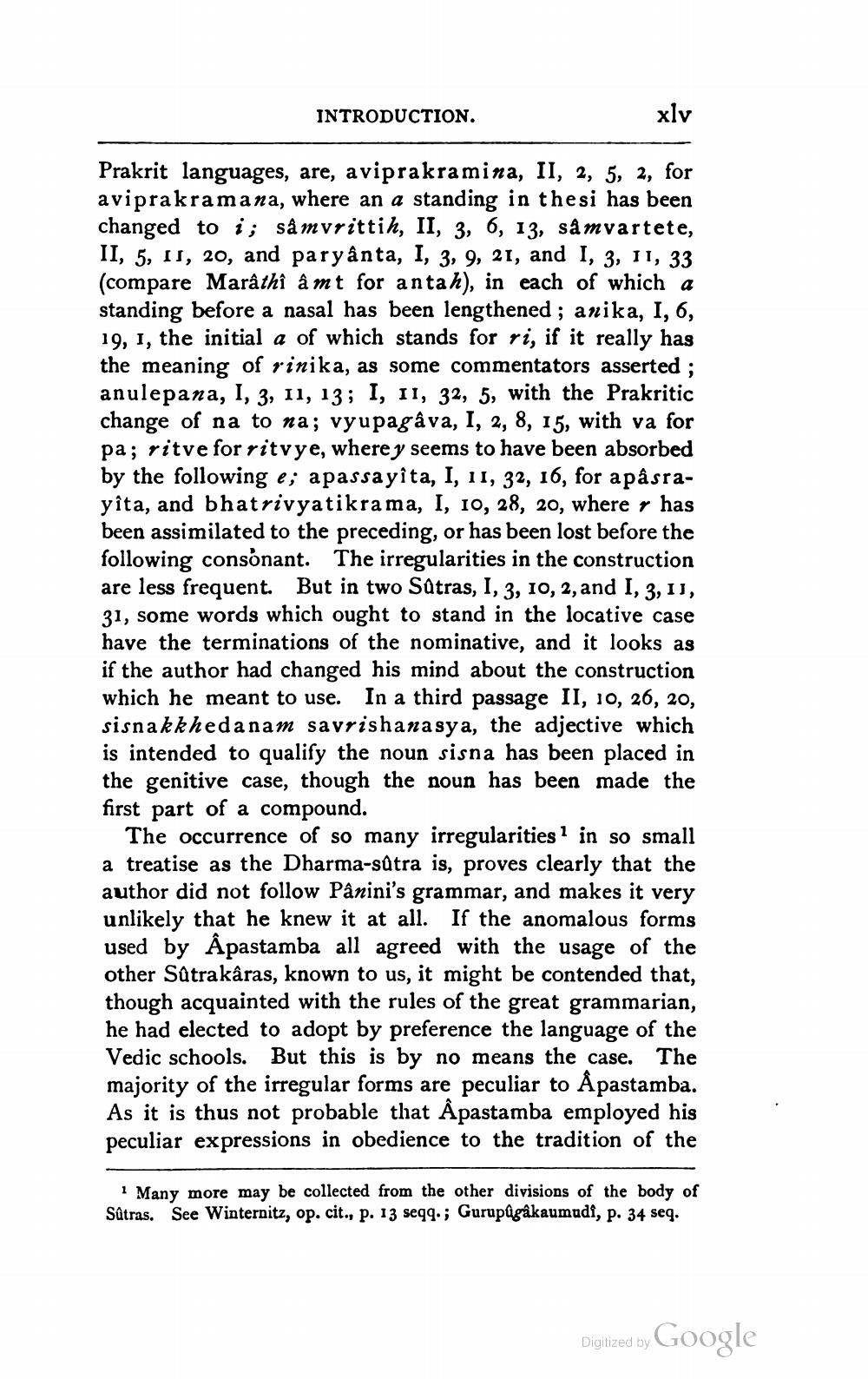________________
INTRODUCTION.
xlv
Prakrit languages, are, aviprakramina, II, 2, 5, 2, for aviprakramana, where an a standing in thesi has been changed to i; så mvrittih, II, 3, 6, 13, sâmvartete, II, 5, IT, 20, and paryânta, I, 3, 9, 21, and I, 3, 11, 33 (compare Marâthî âmt for antah), in each of which a standing before a nasal has been lengthened ; anika, I, 6, 19, 1, the initial a of which stands for ri, if it really has the meaning of rinika, as some commentators asserted; anulepana, 1, 3, 11, 13; I, I1, 32, 5, with the Prakritic change of na to na; vyupagâva, I, 2, 8, 15, with va for pa; ritve for ritvye, where y seems to have been absorbed by the following e; apassayîta, I, 11, 32, 16, for apásrayîta, and bhatrivyatikrama, I, 10, 28, 20, where r has been assimilated to the preceding, or has been lost before the following consonant. The irregularities in the construction are less frequent. But in two Satras, 1, 3, 10, 2, and I, 3, 11, 31, some words which ought to stand in the locative case have the terminations of the nominative, and it looks as if the author had changed his mind about the construction which he meant to use. In a third passage II, 10, 26, 20, sisnakkhedanam savrishana sya, the adjective which is intended to qualify the noun sisna has been placed in the genitive case, though the noun has been made the first part of a compound.
The occurrence of so many irregularities ? in so small a treatise as the Dharma-sútra is, proves clearly that the author did not follow Pânini's grammar, and makes it very unlikely that he knew it at all. If the anomalous forms used by Apastamba all agreed with the usage of the other Sûtrakâras, known to us, it might be contended that, though acquainted with the rules of the great grammarian, he had elected to adopt by preference the language of the Vedic schools. But this is by no means the case. The majority of the irregular forms are peculiar to Åpastamba. As it is thus not probable that Åpastamba employed his peculiar expressions in obedience to the tradition of the
1 Many more may be collected from the other divisions of the body of Sûtras. See Winternitz, op. cit., p. 13 seqq.; Gurupügâkaumudi, p. 34 seq.
Digitized by Google




